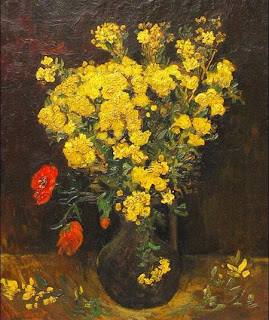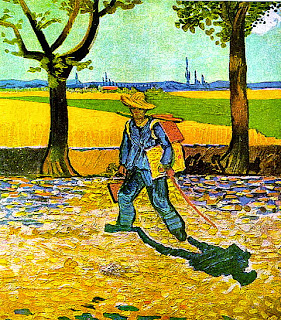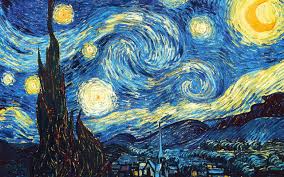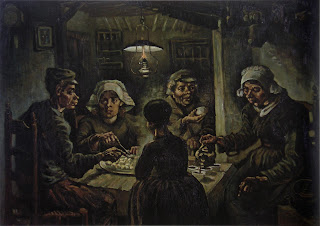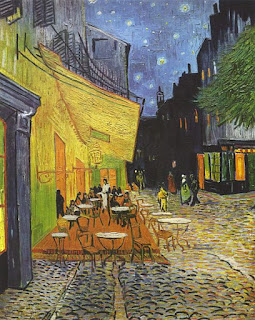Some of Vincent van Gogh’s works were in sequence with each
slightly different from the next, but also very much tied together in theme (1). As
new paints and other tools become improved in the 19th Century they
also reflect differently on canvas. He did not paint what he saw but tried to
paint how he felt about the images (2). This led to some of the most unique paintings in the world. Some of this work comes
from the poverty and personality of the painter who sought to recreate a world
on canvas.
Van Gogh painted flowers on a regular basis. He didn’t have
much money to pay models so he would paint inanimate objects instead. It is
believed that many of his poppy flower paintings came from images of fields in
Southern France. Vincent lived much of his life relatively poor and had to
stretch to buy supplies and other items needed to keep his work going.
He states, “And now for what regards what I myself have
been doing, I have lacked money for paying models else I had entirely given
myself to figure painting. But I have made a series of colour studies in
painting, simply flowers, red poppies, blue corn flowers and myosotys, white
and rose roses, yellow chrysanthemums-seeking oppositions of blue with orange,
red and green, yellow and violet seeking les tons rompus et neutres to
harmonize brutal extremes. Trying to render intense colour and not a grey
harmony. Now alter these gymnastics I lately did two heads which I dare say are
better in light and colour than those I did before (3)
The painting has been stolen twice from Cairo's Mahmoud
Khalil Museum. The first time, the painting disappeared in 1978 and recovered in
Kuwait (4).
It was believed at the time the first theft occurred security was lax. The same
problem occurred again in 2010 and is still missing. Authorities thought they
found the painting when a couple was boarding a plane to Italy (5). As of today, it is
still missing without a trace. Perhaps someday it will show up and we will see the original again.
